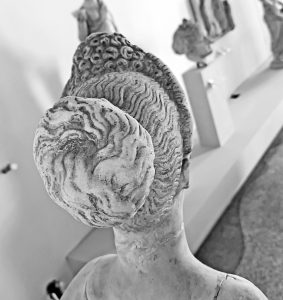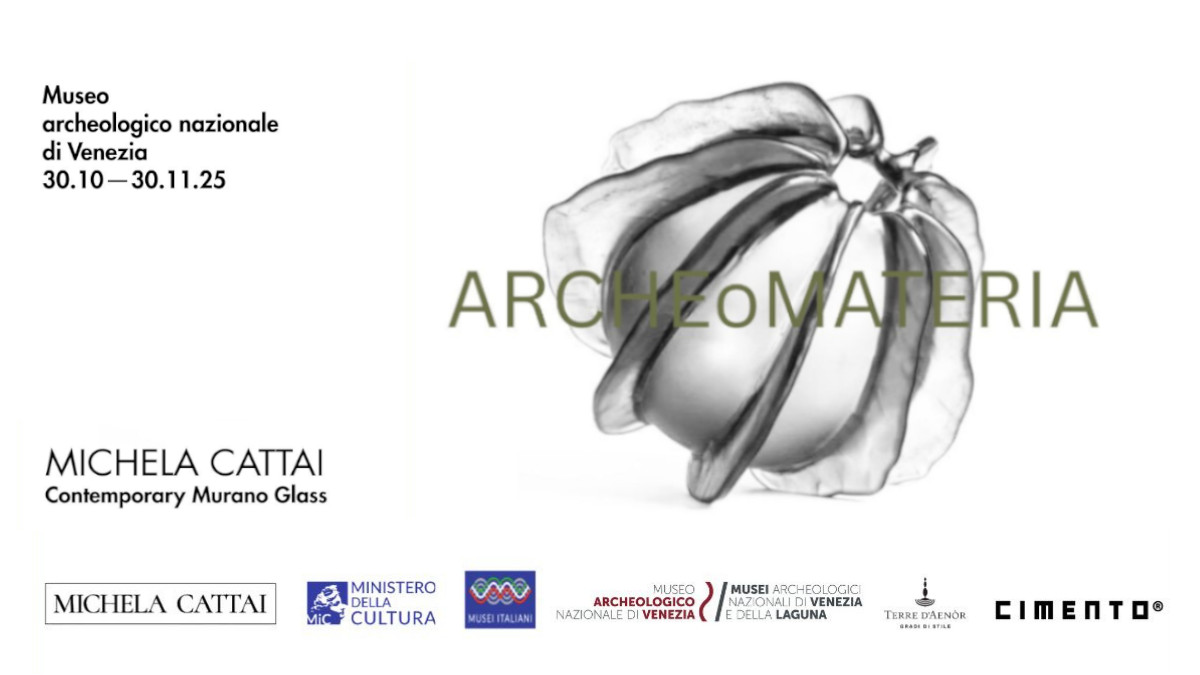
Dominae and fashion: augustae of the Trajan age
Trajan is considered one of the best Roman emperors, awarded by the Senate with the title of optimus princeps. He was of Hispanic origins and his brilliant military career stands out, culminating with the conquest of Dacia between 101 and 106 AD and the advance to Babylon, when he brought the empire to its maximum territorial expansion. Trajan’s wife was Pompeia Plotina: coming from Nemausus (Nimes), in Narbonese Gaul. Their marriage between 70 and 80 AD, allowed a prestigious union inside the provincial élite. According to Pliny the Younger, Plotina was a worthy consort and matron, representing the true roman moral values. He defined her sanctissima femina.
Trajan’s wife would have obtained the title of Augusta around 100 AD, being honored and venerated also as a personification of Vesta or Pudicitia, propagandistic representations of the virtues of balance, wisdom and purity. A woman of great personal wealth, Plotina, however, never played an obvious political role, perhaps with the exception of the case of succession. Having no heirs, the imperial couple had to think of a suitable successor who, in the end, was identified in Hadrian: in this, according to some sources such as Eutropius, Plotina would have been decisive, given Trajan’s reluctance and despite a family bond. The Augusta probably had close relationships with Hadrian, also due to Epicureanism of which she promoted. This question led Cassius Dio to hypothesize a love relationship between them. Cassius Dio himself and the Historia Augusta tell of how Plotina, in 117 AD, kept Trajan’s death hidden for a few days, resorting to some stratagems to have her favorite crowned. These are probably anecdotes taken from previous episodes in the history of Rome, because, in fact, Hadrian’s succession was instead desired by Trajan. What is certain is that Plotina retained her prestige until her death in 123 AD. C. and, after which, she was deified by Hadrian himself.

Female portrait of the Trajan age exhibited in Room 8of the Archaeological Museum of Venice – Detail of the hairstyle.
Another Augusta of the Trajan age was the emperor’s older sister, Ulpia Marciana. Pliny provides a description of her that is almost indistinguishable from that of Plotina, underlining their harmony, without considering possible rivalries. The depiction of the Augustae is useful for underlining the diversity with female figures of previous dynasties. Marciana’s seniority, combined with her behavior as an ideal matron also transmitted to her daughter Matidia Maggiore (Augusta between 112 and 119 AD), ensured her great prestige, making her fundamental for the public image of the dynasty: it is no coincidence that she was deified on the very day of his death, in 112 AD, by decree of the Senate and before the state funeral, as had never happened before.
During the reign of Trajan, women inherited the complex hairstyles of the Flavian age, but the Trajan Augustae brought several original features to them.
A typical female hairstyle from the Trajan age is that of the iconic statue in Room 8, a re-adaptation of the sculptural type of the Venus Marina with the portrait of a high-ranking Roman matron. The hair arranged in a diadem on three overlapping bands culminates in a toupee of curls at the top, sewn behind the last band of hair. This triangular arrangement appears as a reworking of the hairstyles of the Flavian age. Furthermore, a voluminous bun of wavy hair at the back replaces the most common braid compositions. The dignity of the domina is underlined by the face idealized in the manner of Greek models but devoid of real expressiveness.


On the contrary, the realistic portrait of the Trajan-era matron exhibited in the Room 10 highlights the woman’s advanced age and perhaps also a somewhat stern or strong-willed side of her character, as would seem to emerge from the frowning expression and tight lips.
Here the hair in a lowered double diadem, delimited by two braids that symmetrically frame the face, reproduces, in a private portrait, what was the famous hairstyle of Matidia, Trajan’s niece. The hair of the cap is grouped with numerous braids, wrapped together in an original helical chignon.
Michele Gatto e Patricia Caprino
Bibliography
Cenerini F. 2014, Dive e donne. Mogli, madri, figlie e sorelle degli imperatori romani da Augusto a Commodo, Imola.
Marchesi M. 2006, All’imperiale: capelli e potere nel mondo romano, in P. Bellasi, T. Sparagni (eds.), Un diavolo per capello. Dalla sfinge a Warhol. Arte Acconciature Società, catalogo mostra Bologna, Milano 2006, pp. 49-53.
Tate K.S. 2011, The Deification of Imperial Women: Second-Century Contexts, Saskatoon.
Torrejón P.P. 2018, Plotina Augusta: luces y sombras sobre una mujer de estado, in “Veleia: revista de prehistoria, historia antigua, arqueología y filología clásicas” 35, pp. 21-39.
Traversari G. 1968, Museo Archeologico di Venezia. I ritratti, Roma,




